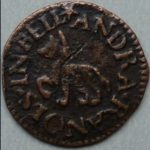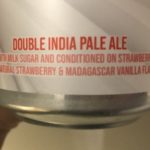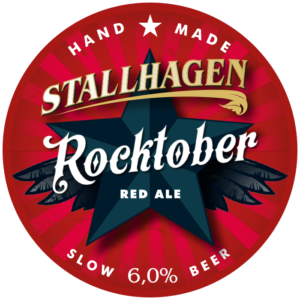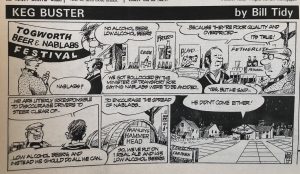 Vacation? Haven’t had one of those since… 2019? Actually going places and looking at things? Don’t know how I will manage. Mr. Protz wrote* about one way to go places and look at things in Belgium, a tram that runs 42 miles and stops something like 68 times at or near watering holes. Much excitement in the ensuing comments. People want to be on that for sure. But… does it come along with a separate… err… washroom car? Pour le pissoire en volant? Annnnnddd… I might have thought the paint job on the tram might have been a little more exciting given the grey ground, grey sky, grey building setting. But you know me and my commitment to that colourful palate of life’s joys.
Vacation? Haven’t had one of those since… 2019? Actually going places and looking at things? Don’t know how I will manage. Mr. Protz wrote* about one way to go places and look at things in Belgium, a tram that runs 42 miles and stops something like 68 times at or near watering holes. Much excitement in the ensuing comments. People want to be on that for sure. But… does it come along with a separate… err… washroom car? Pour le pissoire en volant? Annnnnddd… I might have thought the paint job on the tram might have been a little more exciting given the grey ground, grey sky, grey building setting. But you know me and my commitment to that colourful palate of life’s joys.
First up, Pellicle published another great story by David Jesudason. It’s the sort of piece I wondered for years about, though I was wondering why I never saw them. It’s a portrait of a possibly perfect pub, the Southampton Arms in Kentish Town, London:
This is the only real quandary you face when you visit the Southampton Arms—where to sit and who to sit among. The welcome is warm, inviting, and inclusive. The beer itself meets the most agreed-upon definition of ‘craft’—entirely independent, hand-picked, and varied in style, but not quality. The surroundings are uniquely comfortable for a busy London pub—a rare mix of classic hardwood floors and wood panelling, with a communal seating arrangement that fosters conversation between old and young, rich and poor.
The photos by Lily Waite are gorgeous, laden with the interior’s deep browns and rich creams as well as the bright pop of flowers and the glowing beer. They describe a casual, even worn in pub with a relaxed garden for a backyard escape. It looks like homey, the sort of place I would love to visit. Except I am not traveling to England. I will have to console myself with other wonders. Somewhat related, Old Mudge shared some thoughts this week about the general idea of updating of pubs and whether they are always warranted:
Was there any evidence that the previous layout of the Armoury imposed significant extra costs or held back its trading performance? Very often, pub refurbishments seem to be embarked on simply out of a sense of wishing to smarten things up and move with the times rather than any kind of rational cost-benefit analysis. And, as I have remarked before, once the initial surge of interest has subsided, refurbishment often becomes like a drug where you have to keep increasing the dose to get the same effect. The current zeitgeist is very much against the old, quirky and well-worn, but hopefully one day we will return to a time where these qualities are once again seen as desirable in pubs.
At an earlier point in the overall bevvy process, Barry M (the estate manager of all my German land investments) had a piece published this week about a variety of cider making methods in his adopted home:
Unlike the apple varieties typically used to make the majority of English and French ciders, German cidermakers have traditionally favoured what are generally termed dessert or culinary apple varieties with little to no tannin content. Think of the types of apples used in the Eastern Counties of England. Looking through German books on apple varieties, anything with elevated acid levels tends to be put under the Mostapfel category, deemed most suitable for making Most. And indeed, they do make very good cider, with well-made ciders showing a freshness and fruitiness that marks out this German variant of our favourite drink.
And interesting news out of Maine where Brienne Allan is opening a new brewery with a well-defined focus:
Allan, head brewer, was preparing the inaugural batch of beer for Sacred Profane’s opening mid-August as the only lager-exclusive brewery in Maine. Sacred Profane will basically offer two beers, both lagers: one pale, one dark. And Allan fully intends to make them better than anyone else does. To this end, Allan and her fiance Michael Fava, Sacred Profane’s operations manager and a former brewer at Oxbow Brewing Co. in Newcastle, take great pains during the brewing process. They triple decoct, concentrating the wort three times at three different temperatures to develop deep, complexly layered flavor in the lagers.
Conversely to the wonderful spaces, in the aftermath of the #GBBF, some spoke up about the unpleasant aspects of the event including Emmie Harrison-West who wrote a well considered bit entitled “Everyday sexism at beer festivals: a thread” including this very yik observation:
Touching: at bars, men touch and hold your waist to get past you. They wouldn’t dare do this to their male friends though, would they? Strangers would touch my arm, my hands, pull me in for bear hugs where their arms wrap around my body.
Good to see at least that the organizers issued an apology for failing to uphold any sort of standards for bad behaviours. Note: Stan also pointed out that the “Brewer of the Future” as selected at the #GBBF is 59 years old. The only thing weirder was that the competition was for the best home brewer. Maybe “RetroBrew84” might have been a better prize title!
Jordan wrote a rebuttal about a piece on tech and beer that had me scratching my head (see the very foot of the last footnote last week) but Jordon thought about it from another angle – how dependent whatever craft has morphed into is driven by the internet:
For me the frustration is that it seems not to grasp that beer itself is a technological construct. In order for it to exist we need to create all of the ingredients, and all of the ingredients chosen to make an individual beer must be chosen by someone. There is always an intelligence behind the design of a beer because the constituent parts do not make themselves readily available. Beer doesn’t exist in the wild. What this means is that any technology that conveys information is going to fundamentally alter the intelligence of the designer of the beer.
And this week Jeff reviewed the concepts of what could be lumped together under the umbrella of the “Limited Transmission of Craft Culture” when he posted about the fact that no one know what “session” is supposed to mean:
The conversation led to low-ABV beers and how to deal with those, which inevitably led Torch and Crown’s Chris McClellan to comment on the best strength for session IPAs. Ah, session IPAs. This led us away from numbers and into language, and this we can file under “things Jeff knows.” And I know regular beer drinkers have no idea what “session” means.
Lots of good discussion followed which led to confirmations that the lack of understanding is a US matter not shared in other lands and, as Gary pointed out, quite seasoned beer fans “have little interest though in technics and terminology.” There is (in my learn-ed estimation) good reason for this: (i) this information is irrelevant to the actual pleasure, (ii) not standardized and so too often sounds like Mr Boring going on and on making it dubious information; plus (iii) it’s too often made up anyway making it not actual information. These are, after all, these times. It also illustrates the fundamental failure of some beer writing – that it is not so much informative than something like rhetoric. The conversation spun off in all directions leading to this summation on my part:
That’s because beer geeks in the US are disconnected from both the vast majority of US beer drinkers as well as vernacular beer culture in other countries. Hence the third artificial lexicon. Unfortunately most beer writers are beer geeks.
A constant observation that I really haven’t beaten you over the head with is this: the audience for so much of the beer writing I sift through every week is written for (i) other beer writers and (i) other folk tied to the trade. Not the general beer drinking public like that piece up there in Pellicle. No, for too much of it there is an aspect of deep affirmation to it all, goal oriented writing – not unlike reading the histories of the now departed US pop historian David McCullough who seemed oblivious, for example, to the fact that a huge portion of the residents of the 13 colonies in 1775 wanted nothing to do with the revolution. Details. Details…
Finally, I’m not sure what to make of this. At all. Web 1.0 meets setting up a potential liable case? This approach is hardly conciliatory. Is the goal getting lost? What was the goal again?
That’s enough for now. Next week, we will be reporting from the road. On special assignment. Until then for more, check out the updates from Boak and Bailey mostly every Saturday but not from Stan every Monday as he is on his summer holiday. Check out the weekly Beer Ladies Podcast, and at the mostly weekly OCBG Podcast on Tuesdays or Wednesdays – and also sometimes, on a Friday, posts at The Fizz as well. And the long standing Beervana podcast (Ed.: which I have missed from this list for some unknown reason.) There is a monthly sort of round up at The Glass. (Ed.: that seems to be dead now… nope, there was a post on July 25th… in 2022 even.) There is more from DaftAboutCraft‘s podcast, too. And the Beervana podcast. And sign up for Katie’s (Ed.: now very) irregular newsletter, The Gulp, too. And check out the Atlantic Canada Beer Blog‘s weekly roundup. Still gearing up, the recently revived All About Beer has introduced a podcast, too. (Ed.: give it a few weeks to settle in and not be as agreeable.) Plus follow the venerable Full Pint podcast. And Fermentation Radio with Emma Inch. The AfroBeerChick podcast as well! And also look at Brewsround and Cabin Fever. And Ben has his own podcast, Beer and Badword (Ed.: …notice of revival of which has been given… still not on the radio dial…) And remember BeerEdge, too, and The Moon Under Water. There has also been the Beer O’clock Show but that’s now wound up after ten years.
*OK, a couple of weeks after The Times mentioned it.





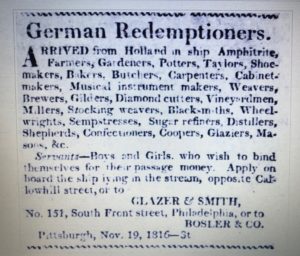 Over five years ago now I wrote the last of a
Over five years ago now I wrote the last of a 

